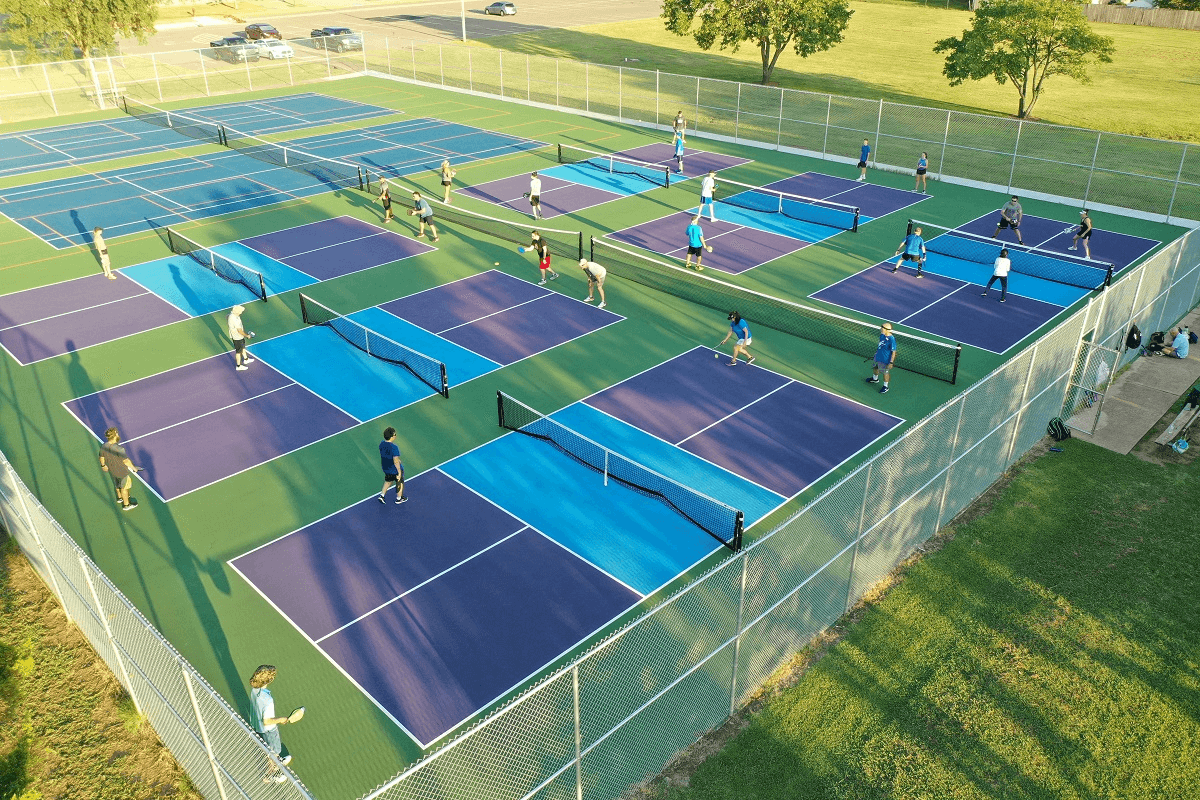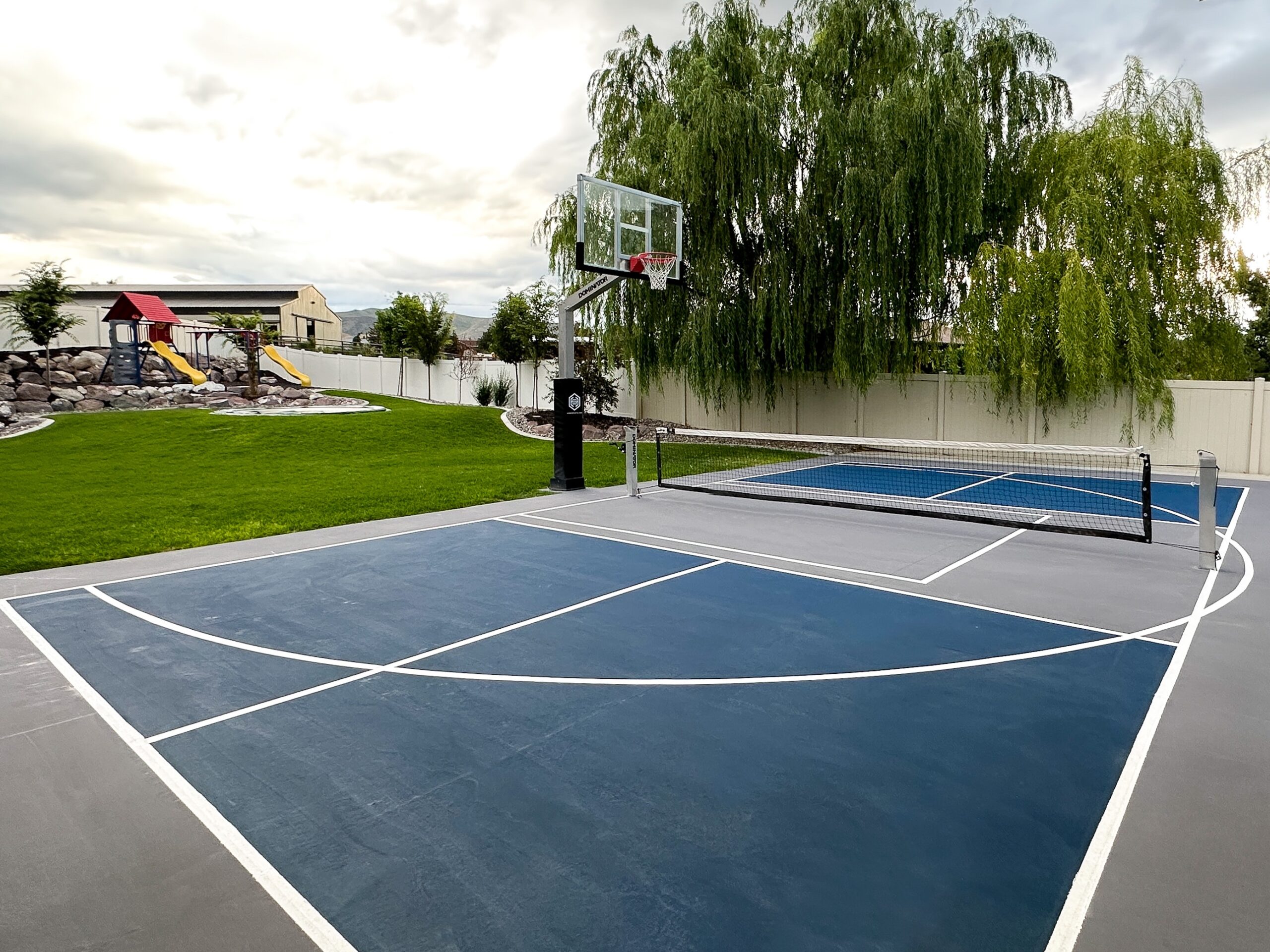Secret Factors in the Building And Construction of Pickleball Courts: From Website Choice to Last Coatings
The building of pickleball courts encompasses a variety of crucial variables, beginning with the option of a suitable website that stabilizes ease of access with ecological considerations. Crucial elements such as court measurements, surface materials, and water drainage systems considerably influence not only the quality of play but likewise the long life of the facility. Moreover, focus to lighting and ending up touches can elevate the general experience for gamers and viewers alike. Recognizing just how each of these components interrelates may expose understandings that are frequently ignored, motivating a better examination of finest methods in court building and construction.
Site Selection Criteria
When embarking on the construction of pickleball courts, it is necessary to toenail down the website choice requirements that will guarantee ideal playability and ease of access. The location must be conveniently obtainable for gamers, preferably located near houses or recreation center, to motivate engagement.
Moreover, the surface needs to be degree and steady, as uneven ground can lead to security risks and affect gameplay. Ample water drainage is likewise vital; selecting a website with great water runoff will certainly aid preserve court conditions throughout unfavorable weather.
An additional crucial consideration is the schedule of energies. Access to power and water is needed for lighting and upkeep functions. Additionally, distance to auto parking facilities is necessary, assisting in easy gain access to for players and viewers alike.
Environmental aspects can not be overlooked; all-natural shade from trees can improve gamer comfort, while direct exposure to prevailing winds might disrupt play. Finally, zoning regulations and neighborhood assistance should be taken into consideration to guarantee that the task aligns with regional standards and receives the support it needs for effective implementation. By thoroughly reviewing these criteria, stakeholders can produce a welcoming and practical setting for pickleball enthusiasts.
Court Dimensions and Design
To make certain optimal gameplay and adherence to policies, the dimensions and design of pickleball courts have to be carefully defined. A typical pickleball court measures 20 feet in width and 44 feet in length for both singles and doubles play. The suggested design consists of a non-volley zone, frequently described as the "cooking area," extending 7 feet from the net on either side. This area is essential, as it influences player positioning and shot choice - Illinois and midwest.
The net height is set at 36 inches at the sidelines and 34 inches at the center, producing a small dip that impacts ball trajectory. Court markings are equally important; lines should be 2 inches wide and distinctive in shade to make sure exposure.
Furthermore, a barrier area surrounding the court is recommended, usually extending 5 to 10 feet beyond the sidelines and standards to fit players' movements and enhance safety. Correct format and dimensions not only make certain conformity with official regulations yet also boost the general playing experience, suiting both leisure and competitive play. Mindful preparation in these areas is extremely important to the effective building and construction of pickleball courts.
Surface Product Options
Choosing the right surface area material for pickleball courts is crucial for making certain ideal player performance and security. The choice of surface area can considerably influence gameplay, consisting of ball bounce, grip, and player convenience.
There are numerous alternatives available, each with its distinctive qualities. Asphalt is a preferred choice as a result of its sturdiness and low maintenance demands. It provides a strong playing surface area that can withstand different weather conditions yet may call for regular resurfacing.
Concrete is an additional widely utilized material, offering exceptional long life and a smooth finish. It permits consistent round view website bounce yet can be hard on players' joints, making it less preferable for lasting play without proper cushioning.
For those looking for enhanced convenience and shock absorption, supported acrylic surface areas present a feasible choice. These surface areas combine a base layer with an acrylic topcoat, supplying boosted traction and a softer feeling, which is beneficial for decreasing the danger of injuries.
Last but not least, artificial turf is gaining traction, especially for multi-purpose facilities. Its adaptability and reduced upkeep requires make it an eye-catching option, though it may not offer the exact same sphere response as standard difficult courts. Cautious factor to consider of these choices will certainly make sure an optimum having fun setting.
Drain and Lighting Considerations
Proper drainage and effective lights are essential components in the construction of pickleball courts, significantly affecting both playability and safety. Sufficient drainage systems prevent water buildup, which can bring about unsafe surface areas and damage to the court structure. A properly designed water drainage plan includes sloped surface areas and proper materials to help with More hints water flow far from the playing location - Illinois and midwest. This not only maintains the honesty of the court but additionally lessens downtime because of poor climate condition.
Lighting is similarly crucial, especially for courts meant for evening use. Correct illumination improves presence, guaranteeing that gamers can see the round clearly and minimizing the danger of accidents. The placement of lights fixtures ought to be tactically intended to eliminate shadows and supply even circulation of light across the court. LED lights are suggested for their power performance and longevity, providing brilliant lighting while lowering operational costs.

Last Finishes and Maintenance
After resolving water drainage and illumination considerations, attention transforms to the last surfaces and ongoing upkeep of pickleball courts. Typical options include acrylic layers and specialized sporting activities surface areas that supply ideal traction and padding.

Seasonal maintenance could include resurfacing every couple of years, depending upon use and environmental aspects. Correctly keeping nets, court lines, and surrounding locations is just as essential to supply a safe and pleasurable having fun experience. By spending in top quality finishes and adhering to an organized upkeep schedule, facility owners can guarantee their pickleball courts continue to be in excellent condition for many years ahead.
Final Thought
To conclude, the effective building and construction of pickleball moved here courts rests on meticulous interest to a number of vital variables. Site selection ought to focus on access and terrain stability, while court dimensions and layout should follow ideal requirements for gameplay. The selection of surface area product considerably influences player security and performance. Efficient drain and ample lighting add to court long life and presence. Ultimately, top quality surfaces and a durable maintenance schedule are necessary for maintaining the court's problem, improving the general experience for players and viewers alike.